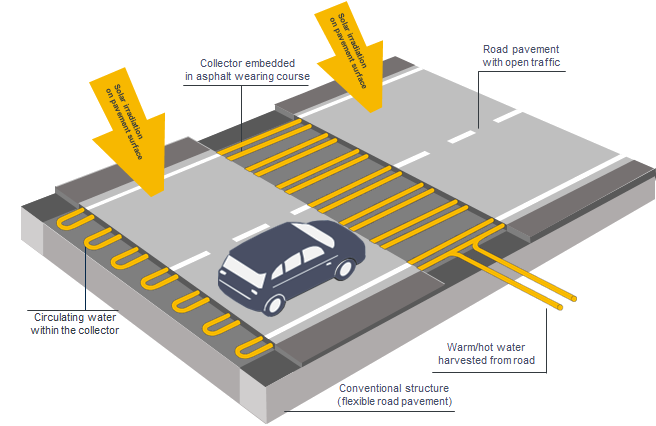“The Enhance Europe (ENergy HArvestiNg CollEctors for Urban ROad PavEment) project focuses on the use of an energy harvesting system consisting of an asphalt solar collector applied to a flexible pavement surface. These collectors are made up of structures embedded inside road pavement layers to transfer heat generated by solar radiation. Thanks to heat conversion, it is possible to generate renewable and easily usable energy for integrating devices that supply power to buildings along roads. The project makes it possible to reduce road surface temperatures, create a liveable urban space for residents that complies with urban planning regulations, and reduce the urban heat island effect, especially during summer. System installation can be integrated in urban environment without affecting cultural heritage landscape,” explained Professor Jiří Koziorek, principal investigator for VSB – Technical University of Ostrava (VSB-TUO) from the Faculty of Electrical Engineering and Computer Science.

The feasibility of the system has already been successfully verified at a laboratory scale by researchers at the University of Padua. Within the Enhance Europe project, pilot testing is being carried out at four sites: Padua (Italy), Ostrava (Czech Republic), Gyöngyös (Hungary), and Vaasa (Finland). These locations, representing diverse climatic and urban conditions, allow researchers to monitor system performance, improve components, test control algorithms and sensors, and develop digital twins for simulation and remote management. The VSB-TUO team plays a central role in developing monitoring and control systems, remote management solutions, and simulation tools.
The aim of the Enhance Europe project is to support the energy transition by transforming a widely available yet underutilised urban infrastructure element - road pavements - into active energy harvesting systems. By integrating solar thermal collectors into asphalt surfaces, the project enables the collection and redistribution of renewable energy, contributing directly to decarbonisation goals. The project runs until 2027.
Text: Martina Šaradínová, PR Specialist for R&D
Photo: AI-generated illustrative images & project archive